#Japanese writers
Photo


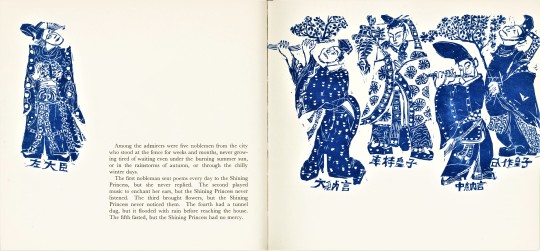

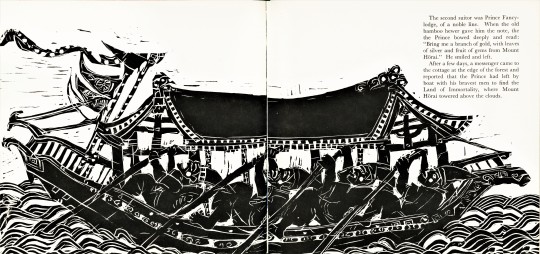

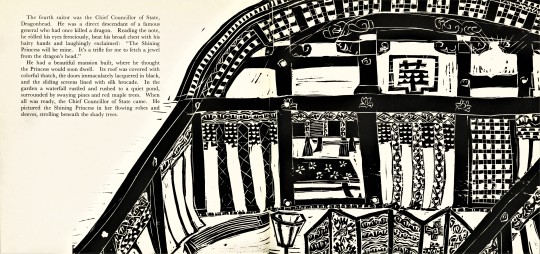

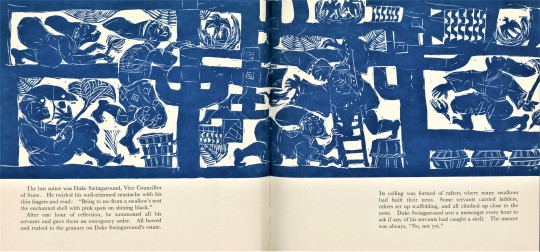
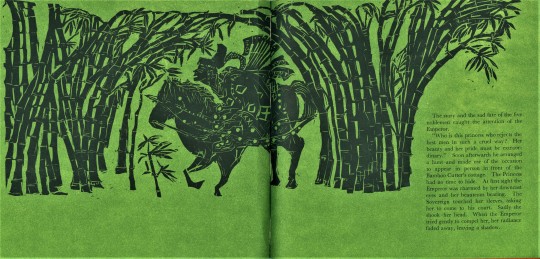
Staff Pick of the Week
My staff pick this week is the trade edition of The Tale of the Shining Princess by Japanese-born writer Hisako Matsubara (b.1935) and Japanese-Canadian artist-printmaker Naoko Matsubara (b.1937), published by Kodansha International LTD. Tokyo, Japan in 1966.
As a artist-printmaker and bookmaker who makes woodcuts, I am greatly inspired by Naoko’s prints. Naoko Matsubara’s work carries on traditions of Japanese printmaking while having its own contemporary flavor. Her woodcuts are ecstatic, they are vibrating with movement. Her use of bold shapes and the white line of the the carving tool makes the most of what woodcut has to offer. In the book form, the active images carry the reader’s eyes through the book space. Her use of negative space activates the page. Additionally, her woodcuts have translated beautifully to commercial printing.
The Matsubara sisters are daughters of a senior Shinto priest, and were raised in Kyoto. Both studied, lived, and worked in the United States. Hisako received her Master of Arts degree from Pennsylvania State College, moving to Germany where she continued her studies and became a prominent writer, publishing her work in Japanese, English, and German. In the 1980s she moved back to the United States, this time to California where she worked at Stanford University.
Naoko received her Master of Fine Arts from Carnegie Institute of Technology in Pittsburgh, now Carnegie Mellon University. After her studies she traveled across Europe and Asia. She returned to the United States and became the personal assistant to the artist and wood engraver Fritz Eichenberg, an artist who has been featured many times on our blog. Naoko taught at Pratt University in New York and at the University of Rohde Island. She also lived in Cambridge, Massachusetts for a time. Naoko is currently living and working in Canada in Oakville, Ontario, where she continues to work and exhibit nationally.
The work of both Hisako and Naoko have had great influence inside the United States and around the world. So lets celebrate their accomplishments!
This book has end sheets of mulberry paper with inclusions of Bamboo leaves, the cover is a red textured paper with a gold stamped design by Naoko.
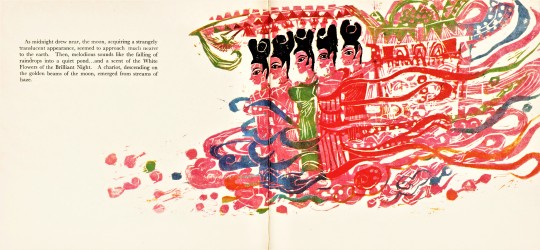


View some of our other AAPI selections for this month.
View our other Staff Picks.
- Teddy, Special Collections Graduate Intern
#staff pick of the week#The Tale of The Shining Princess#hisako matsubara#naoko matsubara#Japanese artists#Japanese writers#Japan#AAPI Hertitage Month#Asian American and Pacific Islander Heritage Month#AAPI#canadian artists#trade edition#Matsubara#woodcuts#printmaking#color printmaking#fiction#stories#teddy
413 notes
·
View notes
Text
"then it hit me: dying is just like sleeping. you only know you’re sleeping when you wake up the next day, but if morning never comes, you sleep forever. that must be what death is like. when someone dies, they don’t even know they’re dead. because they never see it happen, nobody ever really dies. this hit me like a sucker punch. "
- heaven, mieko kawakami
#heaven#mieko kawakami#japanese#asian literature#translation#east and southeast asian literature#japanese writers#literature#literature quotes#fiction#novels#literary fiction#book qoute#books & libraries#reading
35 notes
·
View notes
Text

#Norwegian woods#haruki murakami#quotes#fiction#book quotes#books#short quotes#Japanese writers#murakami books#fiction quotes
9 notes
·
View notes
Text
日本の歴史366 Day 48
2月17日 Summary:
Shimazaki Touson was a Japanese writer who first began his career as a Romantic poet, but eventually became well-known for his works in the literary realm of Naturalism. His first published work of poetry is 若菜集 (Wakana-shu; A Collection of Young Herbs) while his first novel is The Broken Commandment.
His life is pretty saucy once you start looking into his affairs and whatnot 👀 . His actions were heavily criticized by other writers throughout his literary career. Even though he was married, he eventually had an affair...
...with his own niece.
Vocab beneath the break:
島崎 藤村 しまざきとうそん Shimazaki Touson
歌曲 かきょくmelody; tune; song
詩 し poetry
芸術 げいじゅつ art; the arts
運動 うんどう movement; appeal; campaign; drive; crusade; lobbying
ロマン主義 ロマンしゅぎ romanticism
注目 ちゅうもくnotice; attention; observation
詩人 しじん poet
自然主義文学 しぜんしゅぎぶんがく naturalism (literature)
小説家 しょうせつか novelist
初々しい ういういし (young and) innocent; naive; pure; fresh; artless; unsophisticated
恋心 こいごころ (feelings of) love
詩集 ししゅう poetry anthology; collection of poems; collected poems
若菜集 わかなしゅう Collection of young herbs (Shimazaki Touson's first verse collection [x]
初恋 はつこい first love
代表的作品 だいひょうてきさくひん most important works; representative works
パイオニア pioneer
女学校 じょがっこう girls' school
英語教師 えいごきょうし English teacher
時代 じだい those days; period; era
恋愛 れんあい love; love-making; passion; emotion; affections; falling in love
きっかけ chance; start; cue; excuse; motive; impetus; occasion
悩み なやみ worries; concerns; troubles; worry; distress; sorrows; anguish; agony; problem
悩む なやむ to be worried; to be troubled
旅に出る たびにでる to start a journey; to embark on a trip; to set forth; to hit the trail
雑誌 ざっし magazine; journal; periodical
文学界 ぶんがくかい the literary world; literary circles
かかわり relation; connection
発表 はっぴょう publication; presenting; releasing
創作 そうさく creation; production; creative work (novel, film, etc.); original work; (creative) writing
#shay's taking notes#japanese history 366#japanese history#japanese figures#japanese writers#japanese novelists#shimazaki touson#touson shimazaki#shimazaki toson#toson shimazaki#japanese culture#japanese language#vocab#langblr#japanese langblr#studyblr#studyspo#jpnstudynet#writers#bookblr#literature#literary circle#romanticism#naturalism movement#romanticism movement#naturalism
8 notes
·
View notes
Text
Oeuvres des auteurs Japonais de BSD traduites en français
/!\ This post will only be relevant for French people or French learners since it is a list of the available French translations of the books written by the Japanese authors from Bungō Stray Dogs.
@/book_trotter a tweeté une liste non exhaustive que j'ai essayé de compléter du mieux que possible trouvant que c'était une très bonne idée. Bien évidemment si vous constatez un oubli dans ma liste n'hésitez pas à m'envoyer un MP ou bien à commenter !
• Liste de @/book_trotter
• Ma liste
Les auteurs pour lesquels je n'ai malheureusement trouvé aucune traduction française sont les suivants:
- Izumi Kyôka
- Kôda Aya
- Kunikida Doppo
- Oda Sakunosuke
- Oguri Mushitarô
Bonne lecture !
#bungo stray dogs#bungou stray dogs#bsd#Japanese writers#Japanese authors#auteurs Japonais#écrivains Japonais#japanese literature#littérature japonaise#nakajima atsushi#atsushi nakajima#dazai osamu#osamu dazai#edogawa ranpo#ranpo edogawa#tanizaki junichirou#junichirou tanizaki#miyazawa kenji#kenji miyazawa#fukuzawa yukichi#yukichi fukuzawa#akutagawa ryuunosuke#ryuunosuke akutagawa#nakahara chuuya#chuuya nakahara#motojirou kajii#kajii motojirō#mori ogai#ogai mori#yumeno kyusaku
9 notes
·
View notes
Photo


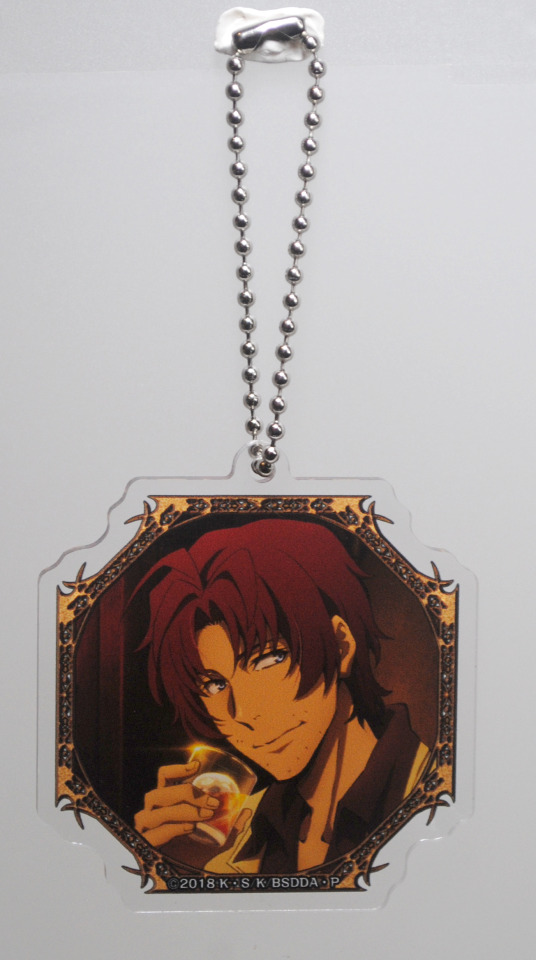
Bungou Stray Dogs: Dead Apple: Oda Sakunosuke - Acrylic Keychain
Size:5 cm
Price: 7€/12 USD
(Shipping price Not included)
Units Available: 1
(Send us a message or comment if you’re interested!!)
#Oda Sakunosuke#Sakunosuke Oda#odasaku sakunosuke#bsd#bungou stray dogs#bsd oda#bsd sakunosuke#ikemen#anime#manga#otome#light novel#otaku#weeb#japanese writers#bsdda#keychain#keychains#oneesanmarket#all products
9 notes
·
View notes
Text
Reading Kobo Abe's short stories or novels feels like being constantly in a "mindfuck" state, which I love. His way of approaching the absurdity, the human existence and psyche, the uncomfortable feelings, omg.
I have already finished "Moetsukita chizu" and the surreal hits hard. It was so descriptive and vague at the same time, I really admire his writing.
5 notes
·
View notes
Text
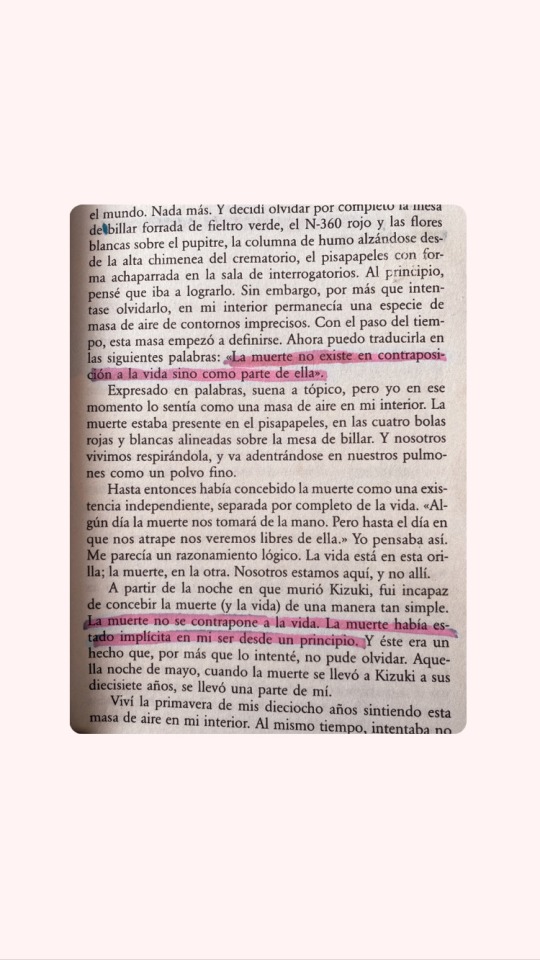
#haruki murakami#writers on tumblr#writersofinstagram#book photography#book blog#bookish#bookpromotion#book review#books & libraries#booklr#0#libros#bookworm#libraries#literature#librarians#books#booksbooksbooks#literatura#escritos#Japanese writers#tokyo blues#norwegian wood
3 notes
·
View notes
Text
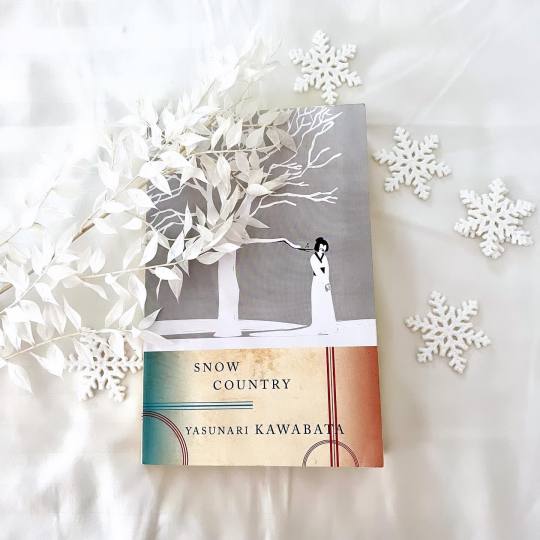
Snow Country by Yasunari Kawabata
0 notes
Photo

Unveiling the secrets of Ono no Minako's poetry: love, desire, and the fleeting nature of existence. Prepare to be mesmerized by the timeless verses that continue to touch souls even after centuries. #TransientLife #ClassicJapanesePoetry
(via Translating Ona No Komachi. My ongoing research and localization of Japanese Women throughout the “Middle Ages”)
#poet#translator#translation#japanese poetry#japanese language#japanese writers#ona no komachi#japan#literature blog#poets#educator#ela#localización#localization
0 notes
Text
Hello hello Japanese literature tumblr
Is there someone who could help me identify a bunch of Japanese books I found at a second hand store today?
#IM VIBRATING OUT OF MY SKIN THIS FIND IS SO FUCKING DHSJHFJSJXJDJWJDJDJS#japanese linguistics#japanese literature#japanese writing#japanese writer#japanese writers#japanese books#japanese book#literature#books#bookblr
1 note
·
View note
Text

• Haruki Murakami •
#haruki murakami#happy bday#kafkasullaspiaggia#japanese writers#poetry#poems on tumblr#artists on tumblr#poets on tumblr#books#sadness#poesia#sadnesspage
0 notes
Text
“If you only read the books that everyone else is reading, you can only think what everyone else is thinking.”
― Haruki Murakami, Norwegian Wood
#haruka murakami#norweigan wood#book qoute#fiction#book quotations#literature#literature quotes#reader#japanese books#japanese writers
49 notes
·
View notes
Text

Tokyo Weekender Article: 5 Trailblazing Japanese Women Writers
An article I wrote and illustrated last year for Tokyo Weekender in celebration of International Women's Day, highlighting the groundbreaking work of five female writers from late Meiji, Taisho and Showa eras. You can check it out here.
"Japanese female authors have only recently been gaining recognition worldwide. It’s long overdue. The rising number of translated titles have flung names such as Mieko Kawakami and Sayaka Murata into the spotlight. Aside from receiving high international acclaim, their books touch on important feminist issues. In a society where women are still pressured to meet patriarchal standards, Japanese female writers today speak openly about the female body, notions of womanhood and misogyny.
Yet these topics are not new to the Japanese literary scene. The country has had a long history of women challenging social norms through their work. Living during the turbulent late Meiji, Taisho and Showa eras, these writers, many of whom were also activists, witnessed their country undergo profound political and social transformation. In the face of changing times, the fierce language of some and the quiet but powerful writing of others spoke volumes. The work of these women not only paved the way for modern-day counterparts but continues to inspire generations of readers."
You can continue reading this article on Tokyo Weekender’s webpage.
#nanaimay writing#nanaimay illustration#international women's day#women's day#women writers#female writers#japanese literature#japanese writers#japanese poetry#female poets#powerful women#feminism#feminist writing#feminist writers#feminist literature#feminist history#activism#queer writers#poetry#illustration#procreate#procreate illustration#digital artist#digital portrait#digital drawing#procreate drawing
0 notes
Text
Fantasy Guide to Interiors



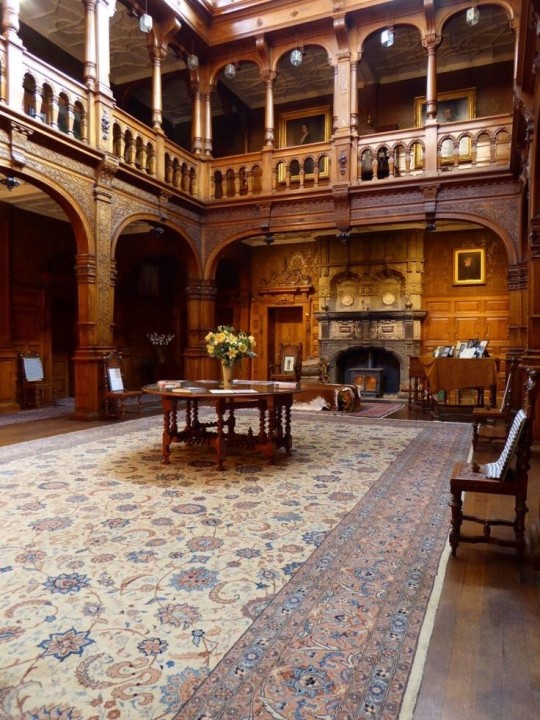
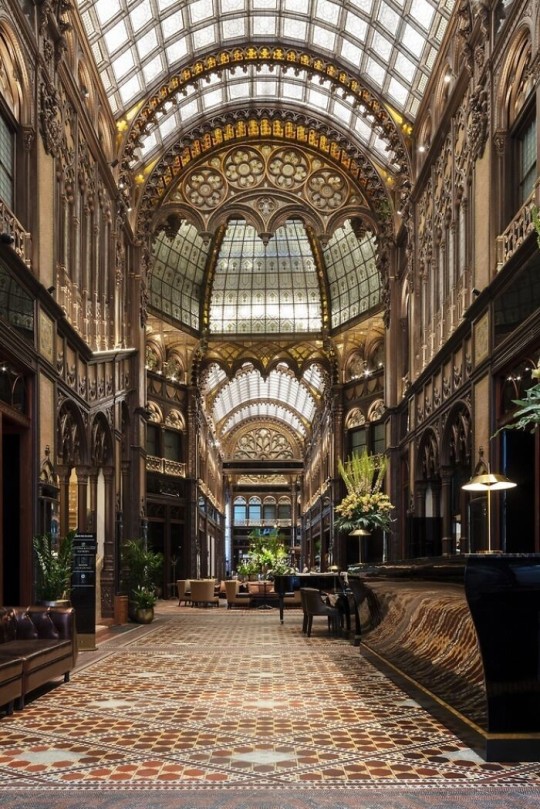
As a followup to the very popular post on architecture, I decided to add onto it by exploring the interior of each movement and the different design techniques and tastes of each era. This post at be helpful for historical fiction, fantasy or just a long read when you're bored.
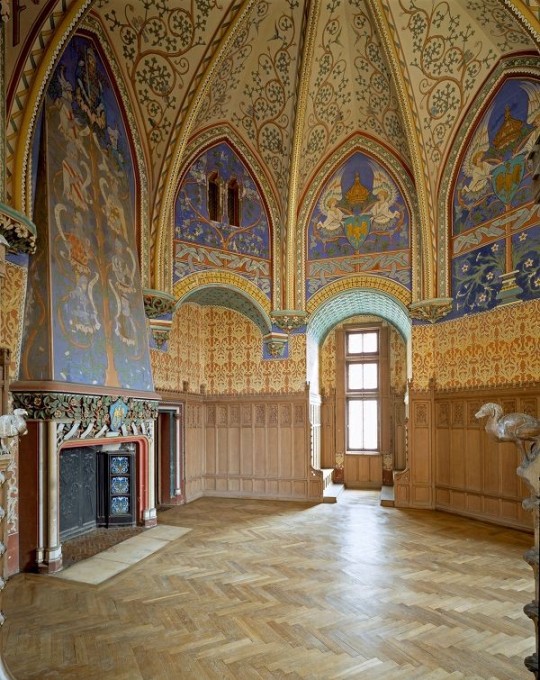


Interior Design Terms
Reeding and fluting: Fluting is a technique that consists a continuous pattern of concave grooves in a flat surface across a surface. Reeding is it's opposite.
Embossing: stamping, carving or moulding a symbol to make it stand out on a surface.
Paneling: Panels of carved wood or fabric a fixed to a wall in a continuous pattern.
Gilding: the use of gold to highlight features.
Glazed Tile: Ceramic or porcelain tiles coated with liquid coloured glass or enamel.
Column: A column is a pillar of stone or wood built to support a ceiling. We will see more of columns later on.
Bay Window: The Bay Window is a window projecting outward from a building.
Frescos: A design element of painting images upon wet plaster.
Mosaic: Mosaics are a design element that involves using pieces of coloured glass and fitted them together upon the floor or wall to form images.
Mouldings: ornate strips of carved wood along the top of a wall.
Wainscoting: paneling along the lower portion of a wall.
Chinoiserie: A European take on East Asian art. Usually seen in wallpaper.
Clerestory: A series of eye-level windows.
Sconces: A light fixture supported on a wall.
Niche: A sunken area within a wall.
Monochromatic: Focusing on a single colour within a scheme.
Ceiling rose: A moulding fashioned on the ceiling in the shape of a rose usually supporting a light fixture.
Baluster: the vertical bars of a railing.
Façade: front portion of a building
Lintel: Top of a door or window.
Portico: a covered structure over a door supported by columns
Eaves: the part of the roof overhanging from the building
Skirting: border around lower length of a wall
Ancient Greece
Houses were made of either sun-dried clay bricks or stone which were painted when they dried. Ground floors were decorated with coloured stones and tiles called Mosaics. Upper level floors were made from wood. Homes were furnished with tapestries and furniture, and in grand homes statues and grand altars would be found. Furniture was very skillfully crafted in Ancient Greece, much attention was paid to the carving and decoration of such things. Of course, Ancient Greece is ancient so I won't be going through all the movements but I will talk a little about columns.
Doric: Doric is the oldest of the orders and some argue it is the simplest. The columns of this style are set close together, without bases and carved with concave curves called flutes. The capitals (the top of the column) are plain often built with a curve at the base called an echinus and are topped by a square at the apex called an abacus. The entablature is marked by frieze of vertical channels/triglyphs. In between the channels would be detail of carved marble. The Parthenon in Athens is your best example of Doric architecture.
Ionic: The Ionic style was used for smaller buildings and the interiors. The columns had twin volutes, scroll-like designs on its capital. Between these scrolls, there was a carved curve known as an egg and in this style the entablature is much narrower and the frieze is thick with carvings. The example of Ionic Architecture is the Temple to Athena Nike at the Athens Acropolis.
Corinthian: The Corinthian style has some similarities with the Ionic order, the bases, entablature and columns almost the same but the capital is more ornate its base, column, and entablature, but its capital is far more ornate, commonly carved with depictions of acanthus leaves. The style was more slender than the others on this list, used less for bearing weight but more for decoration. Corinthian style can be found along the top levels of the Colosseum in Rome.
Tuscan: The Tuscan order shares much with the Doric order, but the columns are un-fluted and smooth. The entablature is far simpler, formed without triglyphs or guttae. The columns are capped with round capitals.
Composite: This style is mixed. It features the volutes of the Ionic order and the capitals of the Corinthian order. The volutes are larger in these columns and often more ornate. The column's capital is rather plain. for the capital, with no consistent differences to that above or below the capital.
Ancient Rome
Rome is well known for its outward architectural styles. However the Romans did know how to add that rizz to the interior. Ceilings were either vaulted or made from exploded beams that could be painted. The Romans were big into design. Moasics were a common interior sight, the use of little pieces of coloured glass or stone to create a larger image. Frescoes were used to add colour to the home, depicting mythical figures and beasts and also different textures such as stonework or brick. The Romans loved their furniture. Dining tables were low and the Romans ate on couches. Weaving was a popular pastime so there would be tapestries and wall hangings in the house. Rich households could even afford to import fine rugs from across the Empire. Glass was also a feature in Roman interior but windows were usually not paned as large panes were hard to make. Doors were usually treated with panels that were carved or in lain with bronze.
Ancient Egypt
Egypt was one of the first great civilisations, known for its immense and grand structures. Wealthy Egyptians had grand homes. The walls were painted or plastered usually with bright colours and hues. The Egyptians are cool because they mapped out their buildings in such a way to adhere to astrological movements meaning on special days if the calendar the temple or monuments were in the right place always. The columns of Egyptian where thicker, more bulbous and often had capitals shaped like bundles of papyrus reeds. Woven mats and tapestries were popular decor. Motifs from the river such as palms, papyrus and reeds were popular symbols used.
Ancient Africa
African Architecture is a very mixed bag and more structurally different and impressive than Hollywood would have you believe. Far beyond the common depictions of primitive buildings, the African nations were among the giants of their time in architecture, no style quite the same as the last but just as breathtaking.
Rwandan Architecture: The Rwandans commonly built of hardened clay with thatched roofs of dried grass or reeds. Mats of woven reeds carpeted the floors of royal abodes. These residences folded about a large public area known as a karubanda and were often so large that they became almost like a maze, connecting different chambers/huts of all kinds of uses be they residential or for other purposes.
Ashanti Architecture: The Ashanti style can be found in present day Ghana. The style incorporates walls of plaster formed of mud and designed with bright paint and buildings with a courtyard at the heart, not unlike another examples on this post. The Ashanti also formed their buildings of the favourite method of wattle and daub.
Nubian Architecture: Nubia, in modern day Ethiopia, was home to the Nubians who were one of the world's most impressive architects at the beginning of the architecture world and probably would be more talked about if it weren't for the Egyptians building monuments only up the road. The Nubians were famous for building the speos, tall tower-like spires carved of stone. The Nubians used a variety of materials and skills to build, for example wattle and daub and mudbrick. The Kingdom of Kush, the people who took over the Nubian Empire was a fan of Egyptian works even if they didn't like them very much. The Kushites began building pyramid-like structures such at the sight of Gebel Barkal
Japanese Interiors
Japenese interior design rests upon 7 principles. Kanso (簡素)- Simplicity, Fukinsei (不均整)- Asymmetry, Shizen (自然)- Natural, Shibumi (渋味) – Simple beauty, Yugen (幽玄)- subtle grace, Datsuzoku (脱俗) – freedom from habitual behaviour, Seijaku (静寂)- tranquillity.
Common features of Japanese Interior Design:
Shoji walls: these are the screens you think of when you think of the traditional Japanese homes. They are made of wooden frames, rice paper and used to partition
Tatami: Tatami mats are used within Japanese households to blanket the floors. They were made of rice straw and rush straw, laid down to cushion the floor.
Genkan: The Genkan was a sunken space between the front door and the rest of the house. This area is meant to separate the home from the outside and is where shoes are discarded before entering.
Japanese furniture: often lowest, close to the ground. These include tables and chairs but often tanked are replaced by zabuton, large cushions. Furniture is usually carved of wood in a minimalist design.
Nature: As both the Shinto and Buddhist beliefs are great influences upon architecture, there is a strong presence of nature with the architecture. Wood is used for this reason and natural light is prevalent with in the home. The orientation is meant to reflect the best view of the world.
Islamic World Interior
The Islamic world has one of the most beautiful and impressive interior design styles across the world. Colour and detail are absolute staples in the movement. Windows are usually not paned with glass but covered in ornate lattices known as jali. The jali give ventilation, light and privacy to the home. Islamic Interiors are ornate and colourful, using coloured ceramic tiles. The upper parts of walls and ceilings are usually flat decorated with arabesques (foliate ornamentation), while the lower wall areas were usually tiled. Features such as honeycombed ceilings, horseshoe arches, stalactite-fringed arches and stalactite vaults (Muqarnas) are prevalent among many famous Islamic buildings such as the Alhambra and the Blue Mosque.
Byzantine (330/395–1453 A. D)
The Byzantine Empire or Eastern Roman Empire was where eat met west, leading to a melting pot of different interior designs based on early Christian styles and Persian influences. Mosaics are probably what you think of when you think of the Byzantine Empire. Ivory was also a popular feature in the Interiors, with carved ivory or the use of it in inlay. The use of gold as a decorative feature usually by way of repoussé (decorating metals by hammering in the design from the backside of the metal). Fabrics from Persia, heavily embroidered and intricately woven along with silks from afar a field as China, would also be used to upholster furniture or be used as wall hangings. The Byzantines favoured natural light, usually from the use of copolas.
Indian Interiors
India is of course, the font of all intricate designs. India's history is sectioned into many eras but we will focus on a few to give you an idea of prevalent techniques and tastes.
The Gupta Empire (320 – 650 CE): The Gupta era was a time of stone carving. As impressive as the outside of these buildings are, the Interiors are just as amazing. Gupta era buildings featured many details such as ogee (circular or horseshoe arch), gavaksha/chandrashala (the motif centred these arches), ashlar masonry (built of squared stone blocks) with ceilings of plain, flat slabs of stone.
Delhi Sultanate (1206–1526): Another period of beautifully carved stone. The Delhi sultanate had influence from the Islamic world, with heavy uses of mosaics, brackets, intricate mouldings, columns and and hypostyle halls.
Mughal Empire (1526–1857): Stonework was also important on the Mughal Empire. Intricately carved stonework was seen in the pillars, low relief panels depicting nature images and jalis (marble screens). Stonework was also decorated in a stye known as pietra dura/parchin kari with inscriptions and geometric designs using colored stones to create images. Tilework was also popular during this period. Moasic tiles were cut and fitted together to create larger patters while cuerda seca tiles were coloured tiles outlined with black.
Chinese Interiors
Common features of Chinese Interiors
Use of Colours: Colour in Chinese Interior is usually vibrant and bold. Red and Black are are traditional colours, meant to bring luck, happiness, power, knowledge and stability to the household.
Latticework: Lattices are a staple in Chinese interiors most often seen on shutters, screens, doors of cabinets snf even traditional beds.
Lacquer: Multiple coats of lacquer are applied to furniture or cabinets (now walls) and then carved. The skill is called Diaoqi (雕漆).
Decorative Screens: Screens are used to partition off part of a room. They are usually of carved wood, pained with very intricate murals.
Shrines: Spaces were reserved on the home to honour ancestors, usually consisting of an altar where offerings could be made.
Of course, Chinese Interiors are not all the same through the different eras. While some details and techniques were interchangeable through different dynasties, usually a dynasty had a notable style or deviation. These aren't all the dynasties of course but a few interesting examples.
Song Dynasty (960–1279): The Song Dynasty is known for its stonework. Sculpture was an important part of Song Dynasty interior. It was in this period than brick and stone work became the most used material. The Song Dynasty was also known for its very intricate attention to detail, paintings, and used tiles.
Ming Dynasty(1368–1644): Ceilings were adorned with cloisons usually featuring yellow reed work. The floors would be of flagstones usually of deep tones, mostly black. The Ming Dynasty favoured richly coloured silk hangings, tapestries and furnishings. Furniture was usually carved of darker woods, arrayed in a certain way to bring peace to the dwelling.
Han Dynasty (206 BC-220 AD): Interior walls were plastered and painted to show important figures and scenes. Lacquer, though it was discovered earlier, came into greater prominence with better skill in this era.
Tang Dynasty (618–907) : The colour palette is restrained, reserved. But the Tang dynasty is not without it's beauty. Earthenware reached it's peak in this era, many homes would display fine examples as well. The Tang dynasty is famous for its upturned eaves, the ceilings supported by timber columns mounted with metal or stone bases. Glazed tiles were popular in this era, either a fixed to the roof or decorating a screen wall.
Romanesque (6th -11th century/12th)
Romanesque Architecture is a span between the end of Roman Empire to the Gothic style. Taking inspiration from the Roman and Byzantine Empires, the Romanesque period incorporates many of the styles. The most common details are carved floral and foliage symbols with the stonework of the Romanesque buildings. Cable mouldings or twisted rope-like carvings would have framed doorways. As per the name, Romansque Interiors relied heavily on its love and admiration for Rome. The Romanesque style uses geometric shapes as statements using curves, circles snf arches. The colours would be clean and warm, focusing on minimal ornamentation.
Gothic Architecture (12th Century - 16th Century)
The Gothic style is what you think of when you think of old European cathedrals and probably one of the beautiful of the styles on this list and one of most recognisable. The Gothic style is a dramatic, opposing sight and one of the easiest to describe. Decoration in this era became more ornate, stonework began to sport carving and modelling in a way it did not before. The ceilings moved away from barreled vaults to quadripartite and sexpartite vaulting. Columns slimmed as other supportive structures were invented. Intricate stained glass windows began their popularity here. In Gothic structures, everything is very symmetrical and even.
Mediaeval (500 AD to 1500)
Interiors of mediaeval homes are not quite as drab as Hollywood likes to make out. Building materials may be hidden by plaster in rich homes, sometimes even painted. Floors were either dirt strewn with rushes or flagstones in larger homes. Stonework was popular, especially around fireplaces. Grand homes would be decorated with intricate woodwork, carved heraldic beasts and wall hangings of fine fabrics.
Renaissance (late 1300s-1600s)
The Renaissance was a period of great artistry and splendor. The revival of old styles injected symmetry and colour into the homes. Frescoes were back. Painted mouldings adorned the ceilings and walls. Furniture became more ornate, fixed with luxurious upholstery and fine carvings. Caryatids (pillars in the shape of women), grotesques, Roman and Greek images were used to spruce up the place. Floors began to become more intricate, with coloured stone and marble. Modelled stucco, sgraffiti arabesques (made by cutting lines through a layer of plaster or stucco to reveal an underlayer), and fine wall painting were used in brilliant combinations in the early part of the 16th century.
Tudor Interior (1485-1603)
The Tudor period is a starkly unique style within England and very recognisable. Windows were fixed with lattice work, usually casement. Stained glass was also in in this period, usually depicting figures and heraldic beasts. Rooms would be panelled with wood or plastered. Walls would be adorned with tapestries or embroidered hangings. Windows and furniture would be furnished with fine fabrics such as brocade. Floors would typically be of wood, sometimes strewn with rush matting mixed with fresh herbs and flowers to freshen the room.
Baroque (1600 to 1750)
The Baroque period was a time for splendor and for splashing the cash. The interior of a baroque room was usually intricate, usually of a light palette, featuring a very high ceiling heavy with detail. Furniture would choke the room, ornately carved and stitched with very high quality fabrics. The rooms would be full of art not limited to just paintings but also sculptures of marble or bronze, large intricate mirrors, moldings along the walls which may be heavily gilded, chandeliers and detailed paneling.
Victorian (1837-1901)
We think of the interiors of Victorian homes as dowdy and dark but that isn't true. The Victorians favoured tapestries, intricate rugs, decorated wallpaper, exquisitely furniture, and surprisingly, bright colour. Dyes were more widely available to people of all stations and the Victorians did not want for colour. Patterns and details were usually nature inspired, usually floral or vines. Walls could also be painted to mimic a building material such as wood or marble and most likely painted in rich tones. The Victorians were suckers for furniture, preferring them grandly carved with fine fabric usually embroidered or buttoned. And they did not believe in minimalism. If you could fit another piece of furniture in a room, it was going in there. Floors were almost eclusively wood laid with the previously mentioned rugs. But the Victorians did enjoy tiled floors but restricted them to entrances. The Victorians were quite in touch with their green thumbs so expect a lot of flowers and greenery inside. with various elaborately decorated patterned rugs. And remember, the Victorians loved to display as much wealth as they could. Every shelf, cabinet, case and ledge would be chocked full of ornaments and antiques.
Edwardian/The Gilded Age/Belle Epoque (1880s-1914)
This period (I've lumped them together for simplicity) began to move away from the deep tones and ornate patterns of the Victorian period. Colour became more neutral. Nature still had a place in design. Stained glass began to become popular, especially on lampshades and light fixtures. Embossing started to gain popularity and tile work began to expand from the entrance halls to other parts of the house. Furniture began to move away from dark wood, some families favouring breathable woods like wicker. The rooms would be less cluttered.
Art Deco (1920s-1930s)
The 1920s was a time of buzz and change. Gone were the refined tastes of the pre-war era and now the wow factor was in. Walls were smoother, buildings were sharper and more jagged, doorways and windows were decorated with reeding and fluting. Pastels were in, as was the heavy use of black and white, along with gold. Mirrors and glass were in, injecting light into rooms. Gold, silver, steel and chrome were used in furnishings and decor. Geometric shapes were a favourite design choice. Again, high quality and bold fabrics were used such as animal skins or colourful velvet. It was all a rejection of the Art Noveau movement, away from nature focusing on the man made.
Modernism (1930 - 1965)
Modernism came after the Art Deco movement. Fuss and feathers were out the door and now, practicality was in. Materials used are shown as they are, wood is not painted, metal is not coated. Bright colours were acceptable but neutral palettes were favoured. Interiors were open and favoured large windows. Furniture was practical, for use rather than the ornamentation, featuring plain details of any and geometric shapes. Away from Art Deco, everything is straight, linear and streamlined.
#This took forever#I'm very tired#But enjoy#I covered as much as I could find#Fantasy Guide to interiors#interior design#Architecture#writings#writing resources#Writing reference#Writing advice#Writer's research#writing research#Writer's rescources#Writing help#Mediaeval#Renaissance#Chinese Interiors#Japanese Interiors#Indian interiors#writing#writeblr#writing reference#writing advice#writer#spilled words#writers
3K notes
·
View notes
Text


Nagata Kabi
Gender: Female
Sexuality: Lesbian
DOB: 28 May 1987
Ethnicity: Japanese
Occupation: Writer, manga artist
#Nagata Kabi#lesbianism#qpoc#lgbt#wlw#female#lesbian#1987#asian#poc#japanese#writer#artist#graphic artist#popular#popular post
209 notes
·
View notes